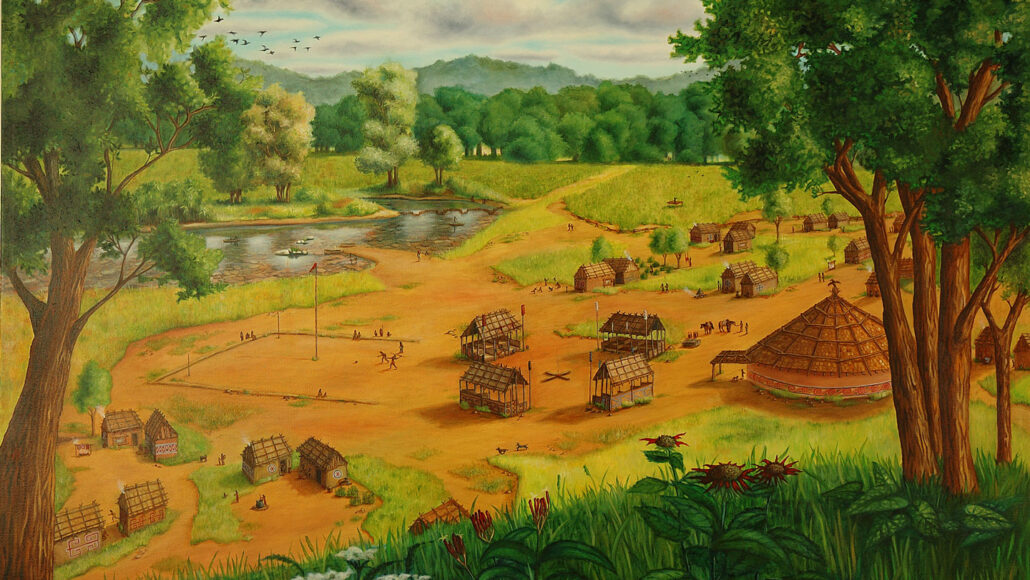Questions for ‘American democracy arrived long before Columbus did’

This historically informed painting depicts a Muscogee (Creek) village in the 1790s. It includes a winter council house, far right, next to a square ground bordered by four clan structures. Muscogee people have practiced democratic decision making in similar council houses for at least 1,500 years, researchers say.
Dori DeCamillis